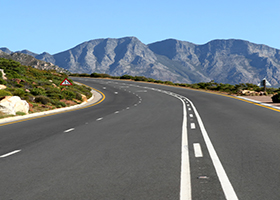

One of the ways institutional investors choose their ‘investable’ markets is to perform a screen of the various target countries’ political, regulatory, financial, economic and even cultural criteria most likely to effect investment performance. I myself have helped a multi-billion pension set up and implement a screen, which was then used by the ‘powers that be’ to select ‘permissible’ markets for investment.
Typically, these EM/FM screens start with 200(ish) countries. Then, you eliminate the developed world, where growth rates are lower, and then you screen out those countries with, for example, high levels of corruption, poor domestic demand, a non-diversified export sector, banking weakness, terrorist threats, or outright war. After all this, you usually arrive at a handful of countries ripe for investment.
Yet one large institutional investor is turning this method on its head. Indeed, the UAE’s Mubadala is apparently looking to make some rather large investments in Afghanistan, which, as you can imagine, is not typically included in FM screens. Tom Arnold of the National has the story, which quotes Mubadala’s Business Development Manager Khaled al Rashedi:
“It’s in exploration phase right now and it’s interesting to see the size of potential…There is an appetite and we are representing the Government but let’s see what develops”
The fund is interested in Afghanistan’s vast mining deposits as well as the oil and gas sector.
Challenging? You bet. Have a gander at the following stats:
- Transparency International’s Corruption Index lists Afghanistan at 179th place (out of 180).
- It is deemed “highly corrupt” in perception surveys.
- The country is not even ranked on the Heritage Institute’s Economic Freedom Index (along with such investment havens as Iraq and the Sudan).
- The World Bank’s doing business survey had the country pegged at 160th out of 183 in 2010. (Actually, that’s a bit of a surprise to me; it tops Venezuela, Lao, and a bunch of African countries.)
Anyway, the point here is that Afghanistan ain’t easy for even the most intrepid investors. So, I give full credit to Mubadala for actively considering this. Few countries need investment more than Afghanistan, as a thriving private sector is crucial for domestic political stability (and international security).
However, let’s remind ourselves that this is not foreign aid…this is (ostensibly) an investment. So, the real question is whether Mubadala will: 1) actually make the investments in Afghanistan; and 2) whether the fund will make any money. I’m optimistic on both counts. Here’s why:
- First, there is a growing number of ‘investment facilitators’ popping up to help bring capital into the country. For example, there’s now an American Chamber of Commerce in Afghanistan.
- Second, The World Bank’s MIGA (multilateral investment guarantee agency) has the AfghanistanInvestment Guarantee Facility, which will “…bridge the gap between investors’ desires to tap business opportunities in the country and concerns about political risks. The facility, administered by MIGA, will mitigate key risks for foreign investors by providing political risk guarantees (insurance) for their investments.” This will help to limit the political risks for any interested investors.
- Third, I recently had a conversation with a frontier investment guru who told me:
‘The risk mitigation options are so numerous and sophisticated today that even challenging frontier market investments can be done in manner that limits your exposure to political risks…
So far so good! Maybe Afghanistan is the next…oh wait, no, the investment guru went on to say:
‘So long as physical safety isn’t threatened and the government officials your working with aren’t overly corrupt, you can pretty much get a deal done anywhere these days.’
Hmmm. Fair enough. That kind of puts us back to square one. I guess we’ll just have to watch this space and see what happens!
This post originally appeared on the Oxford SWF Project website.
